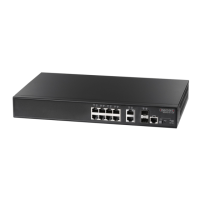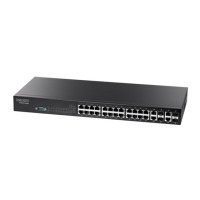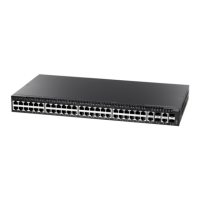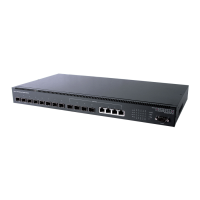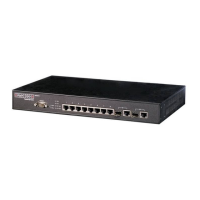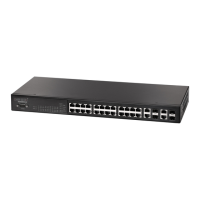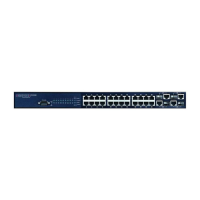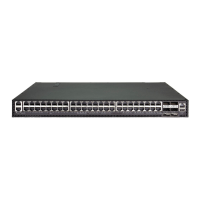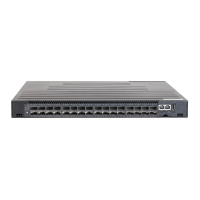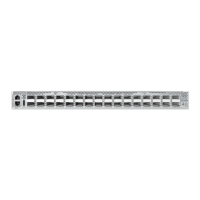C
HAPTER
20
| Unicast Routing
Configuring the Open Shortest Path First Protocol (Version 2)
– 538 –
DISPLAYING
INFORMATION ON
NEIGHBORING
ROUTERS
Use the Routing Protocol > OSPF > Information (Neighbor) page to display
information about neighboring routers on each interface.
CLI REFERENCES
◆ "show ip ospf neighbor" on page 1080
PARAMETERS
These parameters are displayed in the web interface:
◆ Process ID – Process ID as configured in the Network Area
configuration screen (see page 504).
◆ ID – Neighbor’s router ID.
◆ Priority – Neighbor’s router priority.
◆ State – OSPF state and identification flag.
States include:
■
Down – Connection down
■
Attempt – Connection down, but attempting contact (non-broadcast
networks)
■
Init – Have received Hello packet, but communications not yet
established
■
Two-way – Bidirectional communications established
■
ExStart – Initializing adjacency between neighbors
■
Exchange – Database descriptions being exchanged
■
Loading – LSA databases being exchanged
■
Full – Neighboring routers now fully adjacent
Identification flags include:
■
D – Dynamic neighbor
■
S – Static neighbor
■
DR – Designated router
■
BDR – Backup designated router
◆ Address – IP address of this interface.
◆ Interface – A Layer 3 interface on which OSPF has been enabled.
WEB INTERFACE
To display information about neighboring routers stored in the link state
database:
1. Click Routing Protocol, OSPF, Information.
2. Click Neighbor.
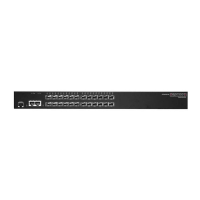
